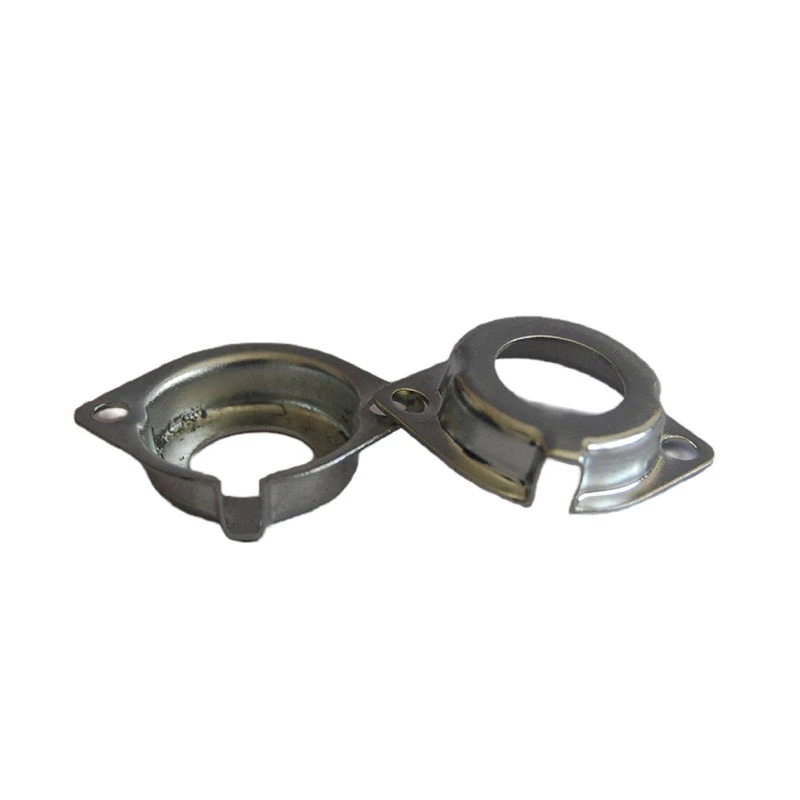A Comprehensive Overview of Abrasive Jet Machining Techniques and Applications
Understanding Abrasive Jet Machining A Comprehensive Overview
Abrasive Jet Machining (AJM) is an advanced manufacturing process that utilizes a high-speed jet of abrasive particles to cut or shape materials. This method is particularly effective for materials that are hard, brittle, or have complex geometries. In this article, we will explore the principles behind AJM, its applications, advantages, and considerations, all while referring to the relevant diagrams that elaborate on the process.
The Principles of Abrasive Jet Machining
At its core, AJM leverages the kinetic energy of abrasive particles, typically made from materials like aluminum oxide, silicon carbide, or garnet. These particles are accelerated using a high-pressure gas—usually air or nitrogen—expelling them through a nozzle at supersonic speeds. The interaction between the high-velocity abrasive stream and the workpiece results in material removal, primarily through impact and erosion.
In the AJM diagram, you can observe several critical components
1. Abrasive Material Storage This is where the abrasive particles are stored before being fed into the jet system.
2. Nozzle The nozzle is essential for directing the flow of the abrasive-air mix towards the workpiece. The geometry of the nozzle is crucial, as it influences the velocity and impact angle of the abrasives.
3. Compressor This component generates the high-pressure gas required to accelerate the abrasive particles. The pressure and flow rate can be adjusted to control the machining process.
4. Workpiece The material being machined is positioned strategically in the path of the abrasive jet. The distance between the nozzle and the workpiece can be varied to achieve different effects.
5. Dust Collection System Since AJM generates fine particles and dust, an integrated dust collection system is vital for both environmental and operational safety.
Applications of Abrasive Jet Machining
AJM is widely employed across various industries due to its versatility and effectiveness. Some of the notable applications include
- Cutting and Shaping AJM is ideal for cutting complex shapes in hard materials, such as ceramics and glass, making it invaluable in industries like electronics and aerospace.
- Surface Cleaning The abrasive jet can effectively remove rust, paint, and other contaminants from surfaces, thereby enhancing adhesion for coatings.
- Micro-Machining AJM is particularly suitable for micro-machining applications, where fine details and precision are crucial, such as in the production of medical devices.
abrasive jet machining diagram

- Engraving and Etching The process allows for intricate designs and patterns to be etched onto materials, adding artistic value, especially in jewelry manufacturing.
Advantages of Abrasive Jet Machining
AJM offers several advantages over traditional machining techniques
1. No Heat Affected Zone (HAZ) Unlike methods that involve heat, such as laser cutting, AJM does not alter the workpiece's thermal properties. This is especially important for sensitive materials.
2. Versatility AJM can process a wide range of materials, including metals, plastics, glass, and ceramics.
3. Precision and Control The ability to control the pressure, flow rate, and distance to the workpiece allows for fine adjustments, facilitating high precision in machining.
4. Eco-friendliness Since this process does not involve harmful chemicals and can be equipped with effective dust collection systems, it is more environmentally friendly compared to other mechanical finishing processes.
Considerations for Abrasive Jet Machining
While AJM is highly beneficial, several factors must be taken into account
- Material Removal Rate AJM typically has a slower material removal rate compared to more aggressive cutting technologies, making it less suitable for high-volume production.
- Operator Skill Effective AJM requires skilled operators who can adjust parameters based on material type and desired outcomes.
- Cost The initial setup cost for an AJM system might be higher than conventional methods, depending on the complexity and automation level required.
Conclusion
Abrasive Jet Machining stands as a powerful technique in the modern manufacturing landscape, accommodating demanding applications across various industries. Understanding its principles, benefits, and limitations are essential for organizations seeking to implement AJM into their production processes. The clear architecture outlined in the AJM diagram provides a visual aid that can facilitate a deeper understanding of how this technology operates, allowing businesses to enhance efficiency and innovation in their machining practices. As industries continue to evolve, AJM will undoubtedly play a critical role in shaping the future of material processing.
-
Precision Sheet Metal Stamping Manufacturer | Fast & ReliableNewsAug.01,2025
-
OEM Sand Cast Pump Valve Fittings - Baoding Hairun Machinery And Equipment Trading Co., Ltd.NewsAug.01,2025
-
Custom OEM Impellers | High Efficiency & PrecisionNewsAug.01,2025
-
OEM Sand Cast Pump Valve Fittings - Baoding Hairun Machinery | Customization, Quality AssuranceNewsAug.01,2025
-
OEM Sand Cast Pump Valve Fittings - Baoding Hairun Machinery And Equipment Trading Co., Ltd.NewsAug.01,2025
-
OEM Sand Cast Pump Valve Fittings - Baoding Hairun Machinery And Equipment Trading Co., Ltd.NewsJul.31,2025















